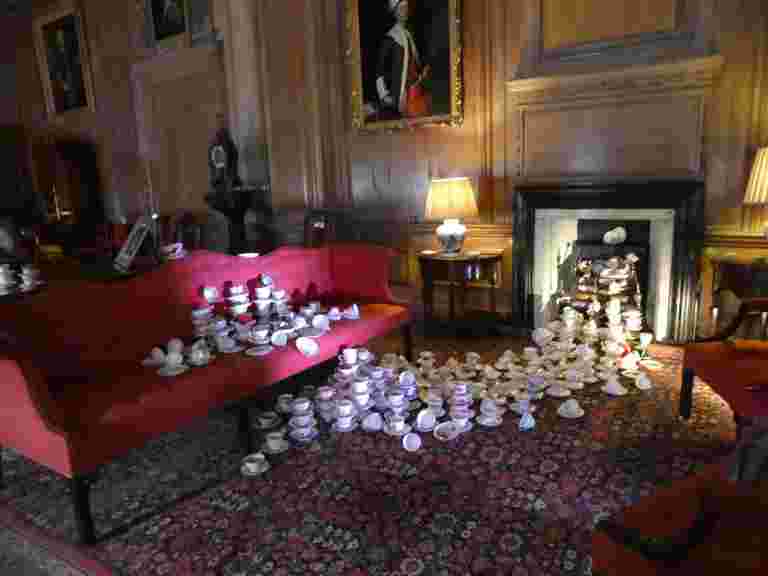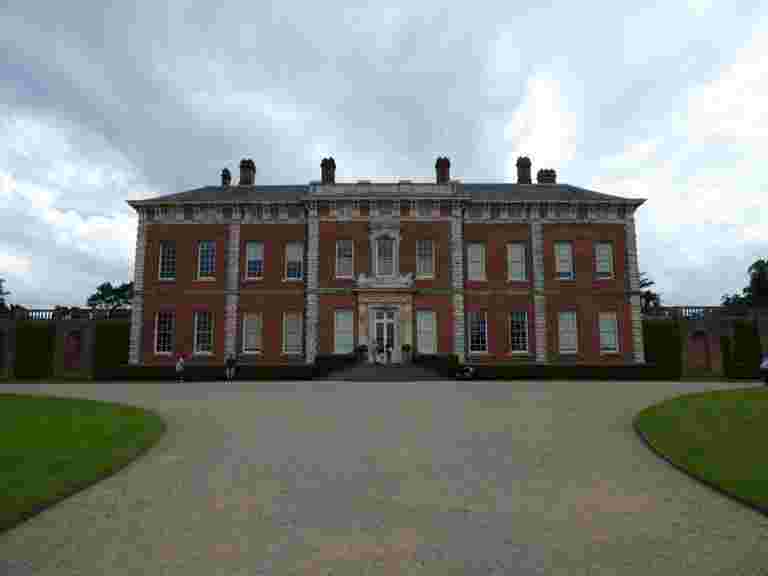This year Beningbrough is celebrating its 300th anniversary, it’s an 18th century Italian styled country house and we thought it might be a good opportunity to visit. Located 8 miles north of York just outside the village of Beningbrough we found ample parking on the day of our visit.

The inspiration for Beningbrough Hall originated in Italy where John Bourchier embarked on his grand European tour. He was fascinated by Italian architecture and when he returned to Yorkshire two years later he put his ideas to work. Arriving by way of the sweeping driveway, our first views of the Hall provided us with a stunning impression of grandeur. Now owned by the National Trust we were interested to discover the history of the Hall and its occupants during its 300 year history. Our tour started in the Great Hall with its cantilevered staircase and marble pillars and moved on to the Library whose shelves were filled with second-hand books available for visitors to purchase for a nominal sum, with the proceeds going to the National Trust – I thought this was a nice touch to a stately home.

Entering the Drawing Room I was intrigued by how the china had been displayed, it certainly wouldn’t have been my style. As you can see from the photo below the tea sets are arranged on the sofa, the floor and for some unknown reason continue into the fireplace. My first impression was that someone had dropped them but I imagine it’s supposed to be modern art! There are 300 tea cups, one for each year of the Hall’s existence.

We continued through the rest of the house viewing displays of antique furniture and porcelain, and going upstairs we glanced in bedrooms with ornate, heavily upholstered four poster beds. In one bedchamber there are a selection of period dressing up clothes and hats available for children to try on along with some big mirrors to admire the look. Some rooms on the upper floor are home to more than 100 portraits on loan from the National Portrait Gallery in London. I particularly liked the portraits of the playwright Alan Bennett and of the Brownlee brothers who are currently the nation’s top two triathletes.

We passed through the Orangery with its fragrant scents on our way to the gardens. The gardens at Beningbrough are a delight during the summer months when the large herbaceous borders are a riot of colour with so many plants in bloom, the peonies looking at their best right now. A sign on the vegetable garden indicated that produce grown there is used by the restaurant. The formal gardens are separated from the rest of the Hall’s grounds by a sunken wall known as a ha-ha, this is to prevent livestock entering the gardens.

Wandering through the walled garden, families were enjoying picnics and feeling a little peckish ourselves, we decided to eat lunch on the terrace of the Walled Garden Restaurant where we found the food to be freshly prepared and wholesome.

A card on each table indicated that in two days time it would be ‘National Cream Tea Day’ of which I’d never heard. Everyday seems to be a National Day for something or other in the UK nowadays! Still, the thought of the ‘cream tea day’ spurred me on to bake a batch of scones to celebrate the occasion at home.

Continuing our walk through the extensive grounds we came across the Victorian Laundry with its dolly tubs, rubbing boards, mangles, etc and nearby found the Stable Shop which had an impressive display of plants, tools for the garden and homeware.

Driving through the estate we stopped briefly at Home Farm, a well stocked farm shop with an attractive cafe. I was intrigued to inspect The Shepherd Hut in the garden as I’d heard about them but never seen one before but unfortunately it was closed.

Before returning home we had a drive through the two pretty villages of Easingwold and Sutton-in-the-Forest but we didn’t leave the car as it had started raining – they did look attractive though with smart village greens and quaint small shops so I’d like to take a look round when we have more time. To find out more about Beningbrough Hall you can do so by looking on the National Trust website here.
If you have enjoyed reading this post you may also like:


Leave a comment